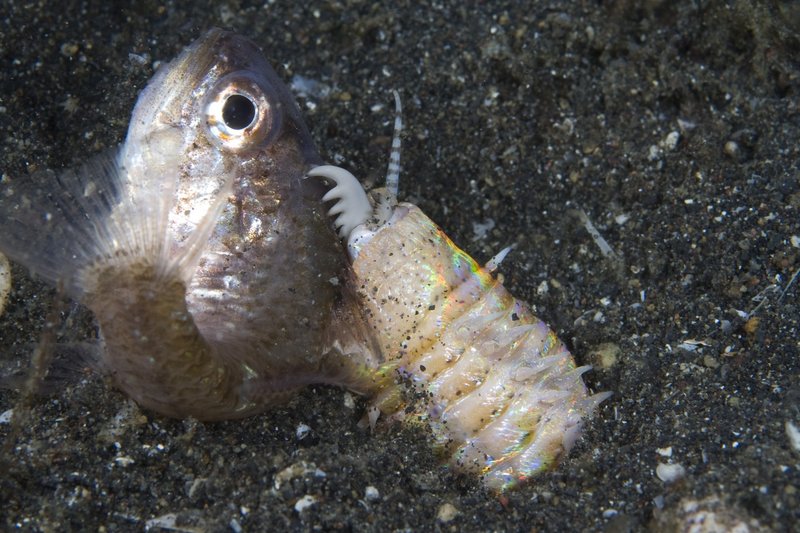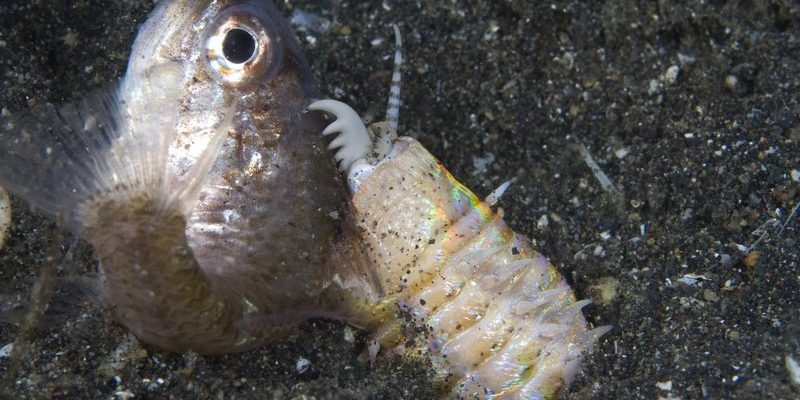
Bobbit worms are fierce ambush predators. They bury themselves in the substrate and use their sharp, spiky jaws to snatch unsuspecting fish that swim too close. It’s like having a hidden trap waiting to do its worst. Here’s the thing: while Bobbit worms are fascinating and play a role in their ecosystem, they don’t belong in a tank with vulnerable fish. In this guide, we’ll explore effective ways to protect small fish from Bobbit worm predation, creating a peaceful environment for your aquatic buddies.
Understanding Bobbit Worms and Their Behavior
Before we dive into the protection strategies, it helps to understand what Bobbit worms are and how they operate. Bobbit worms, known as *Eunice aphroditois*, are marine polychaete worms that are known for their predatory skills. They often hide in the substrate, using their camouflage to blend in until they find the right moment to strike.
These worms can be particularly dangerous for small fish, as they can sense movement nearby and quickly lunge to grab their prey. An interesting fact is that a Bobbit worm can regenerate lost body parts, which makes them quite resilient. This ability can make managing them in a home aquarium even more challenging.
So, knowing that these worms can be both stealthy and resilient underscores the importance of taking proactive steps to protect your small fish. After all, who wants to lose a precious little guppy or dwarf shrimp to an ambush?
Creating a Bobbit Worm-Free Environment
One of the most effective methods to protect your small fish is to create an environment that discourages Bobbit worms from taking up residence. Start by thoroughly inspecting any live rock or sand before introducing it to your aquarium. It’s like when you bring home a new plant; you wouldn’t want to discover later that it came with pests.
Consider using a quarantine tank for new decorations or substrate. This means keeping any new items in a separate tank for a few weeks. During this time, you can observe for any signs of unwanted guests. It’s a little extra work upfront but can save you a lot of headaches later.
Another way to create a Bobbit worm-free space is to choose substrates carefully. Fine sand can be an inviting place for these worms to hide. Instead, opt for coarser gravel. While it won’t eliminate the risk entirely, it can make it less appealing for Bobbit worms to burrow in.
Monitoring Your Tank Regularly
Regular tank maintenance is key to ensuring that your small fish stay safe. Make it a habit to perform routine checks and look for any signs of Bobbit worms. This might include monitoring for unusual substrate movements or noticing your fish behaving erratically.
Here’s a tip: if you see your fish darting away suddenly, it might mean they sensed something lurking nearby. To keep an eye out for these stealthy predators, you can even do periodic excavations. Carefully sift through the substrate using a fine net to search for any hidden Bobbit worms.
Keeping your water parameters stable also helps keep your fish healthy and manage stress levels. Stressed fish are often easier targets for predators. A well-maintained and stable aquarium can make a significant difference.
Using Fish-Compatible Tank Mates
Another effective way to protect your small fish is by choosing tank mates wisely. Some fish and invertebrates can help keep Bobbit worm populations in check. For example, larger fish like certain wrasses are known to hunt and eat Bobbit worms, helping to control their numbers.
However, be cautious when introducing new tank mates. Not all larger fish are suitable for a community tank, especially one with small species. You might want to consider a mix that includes fish that are known to be peaceful and won’t disturb your smaller fish, while still being capable of warding off larger threats.
If you’re not ready to introduce new fish, consider adding shrimp or certain types of crabs. Some species of these small invertebrates can help disturb the substrate and potentially uncover hidden Bobbit worms. Just make sure they’re compatible with your existing fish.
Implementing Physical Barriers
Physical barriers can be a useful strategy to protect your fish from Bobbit worms. Laying down a layer of mesh or a fine barrier around the substrate can prevent these worms from making their home in your tank. It’s a bit like putting up a fence to keep out unwanted visitors.
You can create a simple mesh barrier using materials that allow water to flow freely but restrict larger creatures from passing through. Just be careful with how you install it, as you want to avoid harming your fish or disrupting their environment.
More adventurous aquarists might even consider creating a “worm trap.” This involves setting up a baited area with food that attracts Bobbit worms. Once they enter, you can remove them from the tank. It’s not foolproof, but it’s worth a shot!
Seeking Professional Help
If Bobbit worms are becoming a real problem, don’t hesitate to seek professional help. An aquarium expert can provide tailored advice and solutions specific to your tank. They might suggest adding certain fish, adjusting your feeding routine, or even relocating animals to create a more balanced ecosystem.
Sometimes, it might mean re-evaluating your tank’s setup altogether. If you find yourself in a situation where Bobbit worms are frequently a problem, it could be worth considering more drastic measures, like resetting your tank. Though it’s a big step, it can lead to a healthier environment for your small fish and a more enjoyable aquarium experience overall.
Before taking any measures, consider your options carefully and weigh the pros and cons. Protecting your fish should never feel like a chore. Instead, it should be a fulfilling part of your hobby.
Protecting small fish from Bobbit worm predation might feel daunting, but it’s all about being proactive and informed. By understanding Bobbit worms, creating the right environment, regularly monitoring your tank, and picking compatible tank mates, you can help keep those little fish safe.
And remember, every aquarium is a unique ecosystem. So, don’t be afraid to get creative with your solutions. Whether you choose physical barriers or consult a professional, your efforts can create a more peaceful and thriving habitat for your small fish. Enjoy your aquarium journey, and may it be filled with vibrant colors and happy swims!

